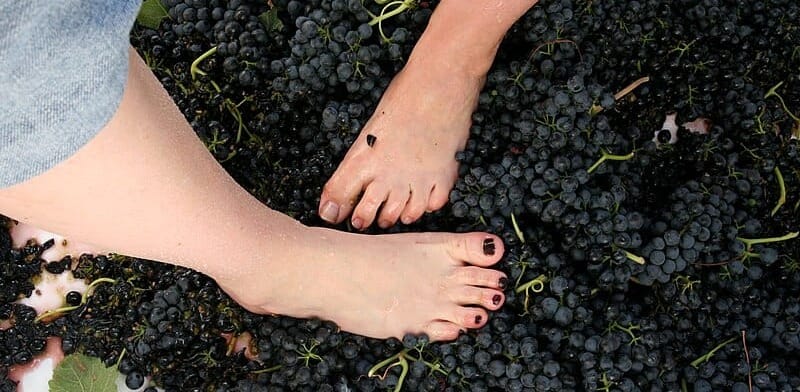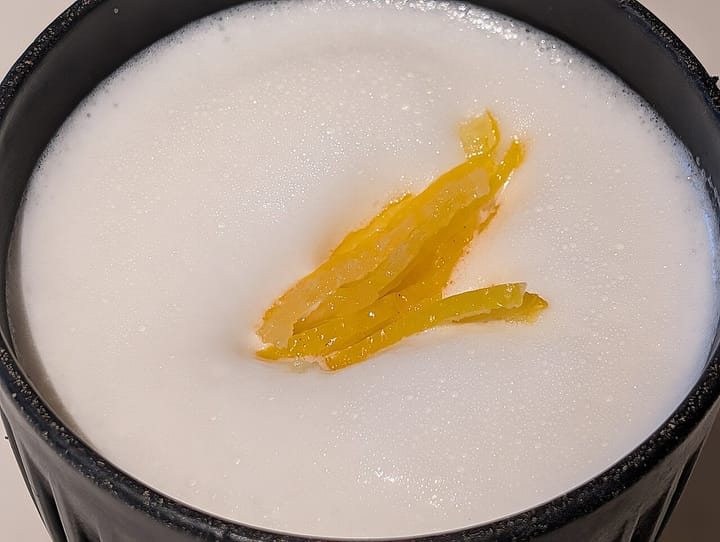Grape Stomping: Key to Traditional Port Wine Making
Foot treading is a traditional and ceremonial method of crushing grapes by foot, still favored by top Port Wine estates for its ability to produce a superior, complex flavor that modern mechanical methods cannot fully replicate.

Port wine, a fortified wine from the Douro Valley in Portugal, is renowned for its rich, complex flavors and long history of production.
The traditional method of stomping grapes for Port wine production is not only steeped in tradition but also plays a crucial role in the wine's quality and character.
This process, known as "foot treading," is performed in large, shallow tanks called "lagares."
The primary reason for foot treading is to gently crush the grapes without damaging the seeds, which can release bitter compounds into the wine.
The human foot is capable of applying the right amount of pressure to break the grape skins, allowing the juice to flow out while keeping the seeds intact.
This method ensures that only the desired flavors and colors are extracted into the juice, contributing to the wine's rich, intense profile.
What Does "Fortified" Means?
Port wine gains its "fortified" status through the infusion of a high-proof grape spirit (about 77% alcohol) while fermentation is underway.
This high-alcohol addition effectively stops the yeast's activity, preventing it from converting all the sugar into alcohol, which is why Port retains a notable sweetness.
The typical blending ratio of brandy to wine is 1:4, resulting in a beverage with an alcohol volume in the range of 20%-21%, at which point it is officially termed Port wine.
Historical Roots
Grape stomping, a method with no specific origin date, traces back to ancient civilizations around 6000 BCE in regions like Georgia, Iran, and Armenia, where the earliest winemaking likely involved this technique.
It gained prominence with the Greeks and Romans, for whom it was both practical and ceremonial, deeply tied to the wine god Bacchus.
The tradition holds a special place in Portugal's Douro Valley, integral to Port wine making since the region's official recognition in 1756 by the Marquis of Pombal.
Grape stomping ensures gentle extraction of flavors without bitterness from seeds, fostering community and linking modern practices to ancient roots.
It's believed that the human touch in stomping adds an irreplaceable quality to the wine, embodying a blend of art, tradition, and craftsmanship valued in luxury and artisanal food and beverage worlds, making it a cornerstone of Port wine's heritage.
Why Must Real Port Wine Come from the Douro Valley?
The Douro Valley's distinction lies in its unique climate and soil. It's often said, "9 meses de inverno, 3 meses de inferno" or "9 months of winter, 3 months of hell" in Portuguese, highlighting the extreme seasonal contrasts.
With near-freezing temperatures, occasional snow, and rain in winter, and dry, scorching summers reaching around 40 degrees Celsius, the region presents a challenging environment for viticulture.
Yet, the vines thrive here, thanks to the schistous soil, a key to their survival. Schist, a type of rock that retains water deep underground, encourages vine roots to grow downwards in search of moisture, sometimes extending over 10 meters.
This deep root system accesses underground humidity, sustaining the vines through the arid surface conditions, characterized by dusty, weathered schist.
This harsh climate necessitates careful vine management, with precise trimming to conserve water, allowing only enough vine growth to produce grapes.
The resulting grapes are highly concentrated, far from the table grapes found in supermarkets, imparting a unique intensity to the wines of the Douro Valley.
How To Get The Grapes To Be Concentrated?
Concentrated grapes are crucial for Port Wine's ability to age well, achieved by stressing the vines—a process likened to a poet drawing inspiration from suffering.
This stress balances quality over quantity, as well-watered vines produce larger, but less flavorful grapes, leading to a diluted wine.
Therefore, most vineyards are restricted from irrigating, relying on natural soil moisture. This ensures the grapes remain concentrated, preserving the distinct quality and depth of Port Wine.
How is Port Wine Made?
For centuries, the optimal extraction of color and tannins from grape skins was achieved in "Lagares," traditional granite stone tanks, essential for premium Port Wine production.
However, due to its labor-intensive nature, this method is now reserved for only the finest Ports.
While modern automated systems, including robotic lagares, are efficient, many producers maintain that the highest quality Port is a result of traditional foot treading.
The production process involves specific steps that contribute to its unique characteristics:
- Harvesting: The harvest typically occurs in September, and the Douro Valley's diverse micro-climates are beneficial for producers, preventing all grapes from ripening simultaneously. Grapes in the valley's dry, hot eastern parts mature earlier than those in the west, and grapes near the river ripen before those on higher elevations. Grapes used for Port wine, such as Touriga Nacional, Touriga Franca, Tinta Barroca, Tinta Roriz (Tempranillo), and Tinta Cão, are harvested from the terraced vineyards of the Douro Valley.
- Crushing and Fermentation: After harvesting, the grapes are crushed to extract the juice, which then begins to ferment. Traditionally, this crushing was done by foot in large, shallow tanks called lagares, though mechanical methods are also common now. Foot treading, a labor-intensive method involving music and dance, remains crucial in making premium Port wines, particularly Vintage Ports. Despite modern techniques that mimic this process, many experts believe that foot treading yields a deeper, more complex flavor that machines can't match.
- Fortification: A few days into fermentation, while there is still residual sugar in the juice, grape spirit (aguardente) is added to the fermenting wine. This spirit is typically 77% alcohol by volume and is added to bring the wine's alcohol content to about 19-20%. The high alcohol content stops the fermentation process, preserving the wine's natural grape sugars and giving Port its characteristic sweetness.
- Aging: The fortified wine is then aged, either in barrels or large stainless steel tanks. The aging process can vary greatly, from a few years for Ruby Ports to several decades for Vintage Ports. The choice of aging vessel and duration significantly influences the wine's flavor, color, and texture.
- Blending and Bottling: Non-vintage Ports (like Ruby and Tawny Ports) are often blends of different years to achieve a consistent house style. Vintage Ports, made from the grapes of a single exceptional year, may be aged in barrels for a short period before bottling but then continue to age for many years in the bottle.
The use of foot treading in Port wine production reflects a balance between tradition and quality. It embodies the dedication to craftsmanship and respect for time-honored practices that are hallmarks of the world's finest wines. For enthusiasts and connoisseurs, the continued use of such traditional methods adds to the allure and mystique of Port wine, making it not just a beverage but a piece of cultural heritage.


